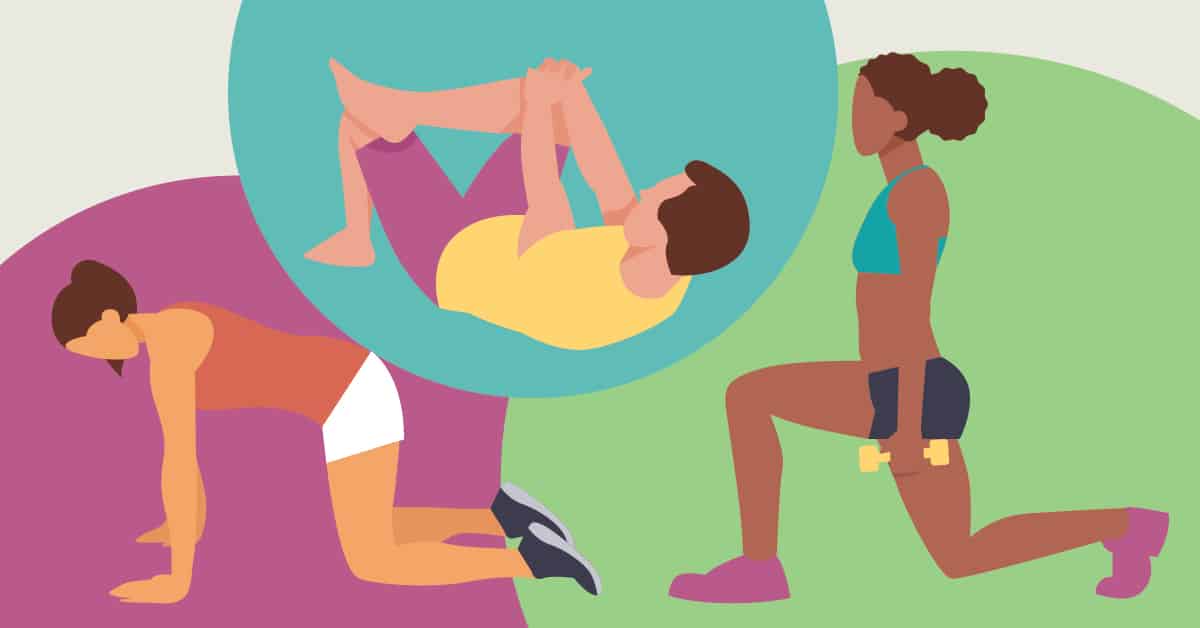Snap, crackle, pop: If you’re seated for long periods every day, you may hear these sounds coming from your hips when you stand or walk around. Most people spend long hours in front of a computer every day and many have a long commute to and from home. Plus, we can’t ignore our nightly TV binges. All this sitting can contribute to the decline of hip health.
But you’re not doomed to creaks and aches every time you stand up. The key is prevention. Let’s dive into how the hips work, why sitting causes issues, and ways you can improve hip health, even if you sit at a desk all day.
Understanding How the Hips Work
The hip joint is a ball and socket joint. It allows the femur bone to move in all different directions. The ball is the head of the femur. It fits into the socket, a cup-shaped part of the pelvis.
Cartilage cushions these joint surfaces, and ligaments hold them together. The hip joint has no arteries, which means the joint surfaces don’t get nutrients from your blood. Instead, a clear liquid called synovial fluid fills the capsule.
This slippery substance delivers nutrients and helps your joint move freely to keep your hips healthy. You must move frequently throughout the day for optimal hip health. You need changes in pressure within the joint to move fluid in and out. When the hip rests, cartilage absorbs the fluid. When you move, fluid squeezes into the joint.

Why Sitting is a Problem for Hip Health
Sitting prevents nutrients from getting to your hip joints for the following reasons.
- Your hips stay flexed when seated. This position prevents fluid from traveling through cartilage.
- Sitting for long periods can also increase pressure on specific parts of the joint, while reducing it in others. This pattern can lead to an uneven distribution of fluid, which over time can increase the risk of injury.
- The hip joint relies on constant nutrient exchange to stay healthy. The longer you sit, the less time nutrients flow through the joint.
Don’t worry. Sitting isn’t all doom and gloom for your hips. Even if you have to sit for long periods, you can take action to stretch and strengthen your hips and keep the synovial fluid flowing.
How to Get Your Hips Moving (Even if You Need to Sit)
First things first: It’s time to get your hips mobile. These exercises are great to do when you wake up, after you’ve sat for a long period, and before bed.
Depending on the shape of your hips and how flexible you are, some exercises may not suit your body. Do what feels comfortable, and over time you can ease into other exercises.
Fire hydrant
This exercise targets the outer glutes while stabilizing your core.
- Start in a hands-and-knees position and place your wrists under your shoulders.
- Tilt the pelvis to keep the spine neutral.
- Exhale to brace the core. Keeping the knee bent, lift your right leg to the side.
- Do not allow movement within the spine, only the hip joint.
- Return to the starting position.
- Repeat for 8 to 10 reps on each side.
Lying Piriformis Stretch
This move helps improve hip mobility by stretching a small muscle deep inside the hips.
- Lie on your back with one leg crossed over the other. Rest your foot on your thigh.
- Pull the top knee toward your opposite shoulder and stretch the piriformis muscle.
- Rock back and forth to feel a good stretch inside the glutes.
- Hold for 10 seconds for any areas needing extra attention.
- Switch to the other side.
Couch Stretch
This stretch opens up tight hip flexors.
- Get into a half-kneeling position. Place the back knee against a cushion, couch, wall, or chair.
- Keep the back thigh in line with the body and the front foot in line with the knee.
- Square your hips and feel a stretch along the front of the thigh.
- Hold for 30 to 60 seconds.
- Repeat on the other side.
Hip-Strengthening Exercises
Next, it’s time to move onto hip strengthening exercises. These exercises will keep your hips strong and help prevent injury.
Glute Bridge
This exercise a perfect way to strengthen your hips and build glute resilience.
- Lie on your back with your knees in a bent position and your feet on the floor.
- Contract your abs and glutes.
- Lift your hips off the floor and press your pelvis toward the ceiling.
- Lower.
- Repeat for 10 to 12 reps.
Rear Lunge
You can do this exercise with or without weight. It’s a great way to strengthen your thighs and glutes to support the hips.
- Stand in a neutral position with your core braced.
- Step back with your left foot.
- Lower the back knee toward the floor until it hits 90 degrees.
- Press back up and return to starting position.
- Repeat for 10 to 12 reps on each side.
Standing Single Leg Hip Flexion
Strengthen your hip flexors and lower core with this move.
- Stand in a neutral position with your core braced.
- Bend your right knee and raise it to 90 degrees.
- Hold for 10 seconds and return it to the starting position.
- Repeat for 5 to 10 reps on each side.
Putting It All Together
It’s important to work on your hip mobility and strength daily. These exercises are a great way to get started. Another important way to improve hip health is to move often. Set a timer on your watch or phone to get up every 30 minutes. Walk around, stretch, and get the synovial fluid moving through your hips.
